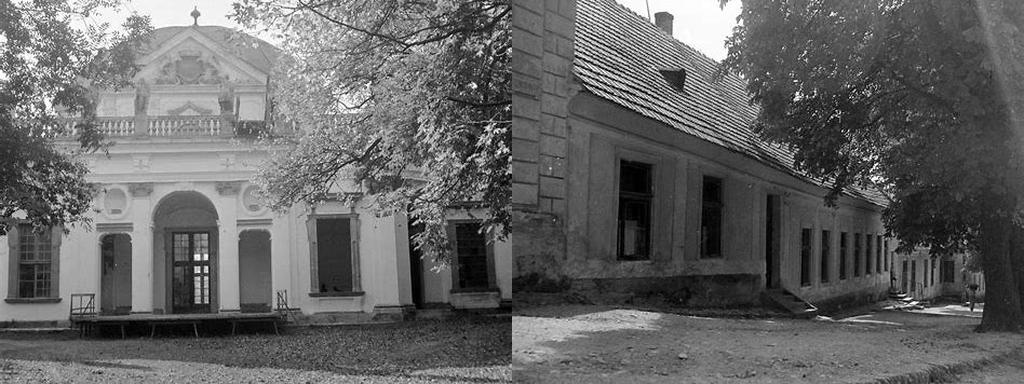
Méra, a charming village folded into the undulating hills of northwest Romania, might seem peaceful—almost sleepy—at first glance. Yet, as anyone curious enough to wander off the main highway will discover, Méra is home to something quietly spectacular: the Mór-kúria, or Mór Mansion. Don’t expect white marble, sprawling English gardens, or the kind of velvet-rope glamour that often attends grand manor houses. Mór-kúria is altogether subtler, richer in spirit, and more intimately woven into the land and lives of those around it. It stands as a testament not to distant royalty, but rather to local stories, resilience, and a unique blend of Hungarian and Romanian heritage.
Stepping onto the grounds of the Mór-kúria is like entering the shadowy chapter of a family album. The manor’s architecture speaks softly of its 19th-century origin, a time when rural nobility sought dignified abodes that balanced prestige with practicality. The mansion’s walls—whitewashed but dulled gently by time—are marked by evidence of an era when Méra was a center of bustling rural life. Look closely and you’ll see subtle hints of Transylvanian vernacular mixed with cosmopolitan influences that filtered in from the wider Austro-Hungarian world. This is hardly surprising, as the mansion was built in the latter half of the 1800s by the locally significant Mór family. Their ambition was not to build a fortress but a gracious home; a pragmatic place of gathering, comfort, and stewardship for the surrounding land.
There’s a serenity here, perhaps owing to the way the mansion sits slightly recessed from the village’s pulse. The grounds are lush and unpretentious: just a grove of old trees, tangled wildflowers, and a trickle of birds threading the air. In early summer, the sunlight falls in creamy drifts across the courtyard, setting aglow the patina of decades that clings to every eave and shutter. Listen, and you might catch strains of the folk music so beloved in Méra; after all, the village is famed for hosting the annual Méra World Music Festival. From certain angles, you can almost picture the soft gatherings on the steps: local leaders in deep discussion, children scampering in their Sunday best, the occasional clink of glasses floated on laughter late into a harvest dusk.
The mansion’s inside carries an atmosphere both wistful and unexpectedly lively. While many grand Transylvanian manor houses have lost their soul to modernity or neglect, Mór-kúria feels remarkably preserved—not in the sense of being frozen, but rather loved and lived-in through time. Crystal chandeliers cast shadows on polished wood, and original tile stoves keep the rooms cozy during winters infamous for their stubborn chill. Now, the mansion opens its doors to visitors, sharing not just its rooms, but stories: walls lined with photographs of past residents, letters, objects of daily use salvaged from decades past, and the kind of small details—lace work, sturdy wooden chests, books of poetry—that anchor the house in memory.
For anyone who loves layered stories, the Mór-kúria’s story is as intricate as any novella. It has weathered wars, changes of regime, and the communal upheavals that rattled the region in the 20th century. Sometimes it was a noble retreat, sometimes a site of forced requisition, at other times the temporary seat of village authority. The aristocratic glamour of its earliest days gradually gave way to a less formal kind of life; older residents recount how it housed everything from orphaned children to community gatherings. In recent decades, the local government, alongside energetic preservationists and history lovers, have done their part to keep the mansion not only standing but thrumming with purpose.
Perhaps what most endears the Mór-kúria to those who do visit is its undramatic honesty. Here you find no velvet ropes keeping you at arm’s length, and no fevered attempts to reconstruct an idealized past. Instead, you’re encouraged to move at your own pace. Wander through sun-dappled hallways and under the arch of ancient trees. Talk to locals—perhaps descendents or distant relatives of the Mór family—who can point out the best view from the kitchen window or recall stories of weddings, funerals, and festivals held on the grounds. This lived connection to both the house and the land runs deep in Méra, and it’s impossible not to feel welcome.
If you’ve come for a sense of continuity, the Mór-kúria delivers. Take a day, or a lazy afternoon, just to bask in the distinct feeling that, in this pocket of Transylvania, history isn’t tucked away in museums. It’s a part of the air, the creak of the floorboards, the taste of walnuts that ripen in the garden. Whether you’re a lover of architecture, history, rural culture, or simply of tranquil places untouched by crowds, the Mór-kúria in Méra patiently awaits your curiosity. Its doors, much like its story, remain open—and all the richer for anyone who passes through.





